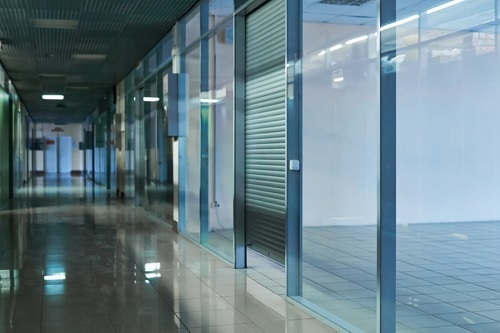Top tips for unoccupied premises risk management

By QBE Senior Risk Manager Adrian Simmonds
Any building left unoccupied for a period of time is more at risk of being broken into by intruders intent on theft or malicious damage. Such buildings are also at greater risk of electrical faults, water leaks or similar defects developing unnoticed.
Look out for QBE’s new Risk Insights guide on Unoccupied Premises risk management. If you have a site or building that is or will soon be vacant the main actions to consider are:
- Immediate action – notify your insurance broker, organise site-clearance contractors, engage security specialists and get effective security in place as soon as possible.
- Premises security – lock the gates, doors and windows with the available locking mechanisms and set the intruder alarms and fire alarms if fitted and power is to remain on.
- Inform the police and fire & rescue services because they will respond differently because of the unoccupancy. Also, inform your friendly neighbours as many incidents are curtailed through the watchfulness of neighbours.
- Apply the ‘5D’s of Security’ to make the site and the building(s) secure. In summary these are:
- Deter unwanted intrusions (keeping up appearances)
- Defend the premises (barriers to access)
- Detect intrusions (spot them early)
- Deny access to fuels and tools (bolt it down or lock it up)
- Demonstrate response (lights, camera, action)
- Isolate services – if practical, isolate water supplies, electricity and gas. This removes the primary sources of damage from fire, explosion and water ingress.
- Inspect regularly – organise to have irregular visits by staff, neighbours or security guards during the period of unoccupancy.
- Keeping up appearances - make the premises look like they are occupied or at least being visited intermittently. Secure letterboxes, re-direct post and arrange for basic grounds maintenance.
- Fire risk controls – maintain fire detection and alarms if required/permitted by your insurer. Remove all combustibles and fuels from outside and inside the building.
- Water damage controls – prepare for cold snaps – check insulation of pipework and tanks for live water systems or drain them down temporarily. Or maintain heating above 4˚
- Building maintenance - maintain roofs and rooflights in good condition. Ensure doors and windows are secure and can’t easily be broken through or removed.
If you are planning refurbishment or demolition works on the building, make sure you choose certified and qualified contractors and maintain a watchful eye on the work they are doing. Inform your neighbours so they are aware of what is (and isn’t) meant to be going on.
If you are unfortunate enough to suffer illegal occupation by squatters or other parties, be ready to act quickly to get the necessary court orders arranged. Once these are served, most squatters will move on as they know the law very well.
And when the day comes for re-occupation, make the building ready through deep cleaning, changing doors locks, checking that water and electrical systems are in good order, and getting the meter readings organised. Remember to inform your insurance broker that the building is re-occupied.
About QBE
QBE European Operations is part of QBE Insurance Group, one of the world’s leading international insurers and reinsurers and Standard & Poor’s A+ rated. Listed on the Australian Securities Exchange, QBE’s gross written premium for the year ended 31 December 2018 was US$13.7 billion.
As a business insurance specialist, QBE European Operations offers a range of insurance products from the standard suite of property, casualty and motor to the specialist financial lines, marine and energy. All are tailored to the individual needs of our small, medium and large client base.
We understand the crucial role that effective risk management plays in all organisations and work hard to understand our clients’ businesses so that we offer insurance solutions that meet their needs – from complex programmes to simpler e-trading solutions – and support them in minimising their risk exposures. Our expert risk management and rehabilitation practitioners focus on helping clients improve their risk management so that they may benefit from a reduction in claims frequency and costs.

